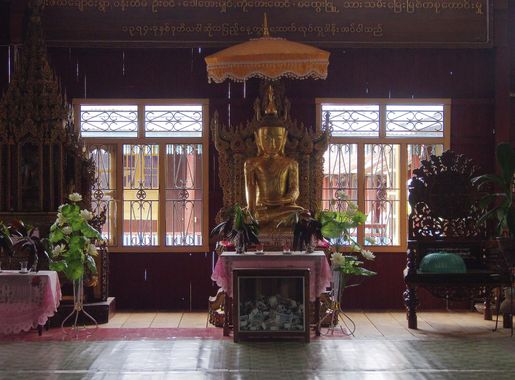
The Serene Waters of Inle Lake
Discover the enchanting beauty and unique culture of Inle Lake, Myanmar's serene destination, renowned for its leg-rowing fishermen, floating markets, and ancient pagodas.
Inle Lake, nestled in the heart of Myanmar, is a captivating destination for tourists seeking tranquility and adventure. Stretching over 116 square kilometers, this freshwater lake is surrounded by verdant hills and dotted with charming stilt villages. The unique way of life on Inle Lake, where locals live in symbiosis with the water, offers an immersive cultural experience that is hard to find elsewhere. One of the highlights of Inle Lake is the traditional leg-rowing fishermen. These skilled fishermen have perfected a unique technique of paddling with one leg while balancing on their boats, creating a picturesque scene against the backdrop of the shimmering lake. Visitors can also explore the bustling floating markets, which move around the lake, offering a variety of goods from fresh produce to handmade crafts. These markets provide a glimpse into the daily lives of the lake's inhabitants and are a must-visit for any traveler. The lake is also home to several ancient pagodas and monasteries, such as the Phaung Daw Oo Pagoda and the Nga Phe Kyaung Monastery, known for its jumping cats. These religious sites add a spiritual dimension to the visit, allowing tourists to connect with the rich heritage and traditions of the region. Additionally, the surrounding area is perfect for trekking and cycling, offering stunning views and a chance to interact with the local Shan, Intha, and Pa-O communities. Inle Lake is not just about scenic beauty; it is also a hub for sustainable tourism. Many eco-friendly resorts and initiatives are in place to preserve the lake's natural environment and promote responsible travel. This makes Inle Lake an ideal destination for those looking to enjoy a serene escape while contributing to the conservation of this unique ecosystem.
Local tips in Inle Lake
- Visit the floating markets early in the morning to experience the vibrant atmosphere and avoid the crowds.
- Hire a local guide to navigate the lake and gain insightful knowledge about the culture and traditions of the Intha people.
- Respect local customs and dress modestly, especially when visiting religious sites.
- Try the local Inle Lake cuisine, including dishes made from fresh fish caught from the lake.
- Bring a good pair of binoculars for bird watching. Inle Lake is home to many rare and migratory bird species.
- Consider staying in an eco-friendly lodge to support sustainable tourism practices.
The Serene Waters of Inle Lake
Inle Lake, nestled in the heart of Myanmar, is a captivating destination for tourists seeking tranquility and adventure. Stretching over 116 square kilometers, this freshwater lake is surrounded by verdant hills and dotted with charming stilt villages. The unique way of life on Inle Lake, where locals live in symbiosis with the water, offers an immersive cultural experience that is hard to find elsewhere. One of the highlights of Inle Lake is the traditional leg-rowing fishermen. These skilled fishermen have perfected a unique technique of paddling with one leg while balancing on their boats, creating a picturesque scene against the backdrop of the shimmering lake. Visitors can also explore the bustling floating markets, which move around the lake, offering a variety of goods from fresh produce to handmade crafts. These markets provide a glimpse into the daily lives of the lake's inhabitants and are a must-visit for any traveler. The lake is also home to several ancient pagodas and monasteries, such as the Phaung Daw Oo Pagoda and the Nga Phe Kyaung Monastery, known for its jumping cats. These religious sites add a spiritual dimension to the visit, allowing tourists to connect with the rich heritage and traditions of the region. Additionally, the surrounding area is perfect for trekking and cycling, offering stunning views and a chance to interact with the local Shan, Intha, and Pa-O communities. Inle Lake is not just about scenic beauty; it is also a hub for sustainable tourism. Many eco-friendly resorts and initiatives are in place to preserve the lake's natural environment and promote responsible travel. This makes Inle Lake an ideal destination for those looking to enjoy a serene escape while contributing to the conservation of this unique ecosystem.
When is the best time to go to Inle Lake?
Iconic landmarks you can’t miss
Nga Phe Chaung Monastery
Experience the serene beauty of Nga Phe Chaung Monastery, a haven of tranquility with stunning wooden architecture and rich spiritual heritage near Inle Lake.
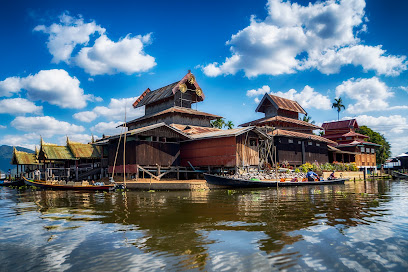
Novotel Inle Lake
Experience luxury and tranquility at Novotel Inle Lake, nestled on the scenic shores of Myanmar's breathtaking Inle Lake.

Kakku Pagodas
Discover the enchanting Kakku Pagodas, a stunning collection of over 2,000 ancient stupas nestled in the serene hills of Shan State, Myanmar.
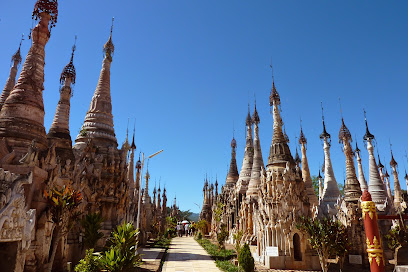
Red Mountain Estate Vineyards & Winery
Experience the beauty of Red Mountain Estate Vineyards & Winery in Myanmar, where exquisite wines meet breathtaking landscapes.
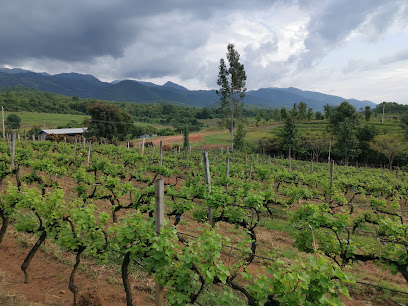
Shwe Inn Dein Pagoda
Discover the spiritual beauty and architectural marvels of Shwe Inn Dein Pagoda near Inle Lake, Myanmar's hidden gem of tranquility and culture.
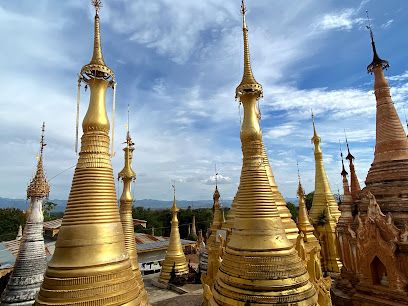
Nyaung Ohak
Explore the historical wonder of Nyaung Ohak, where ancient stupas and serene landscapes merge to tell the story of Myanmar's rich heritage.
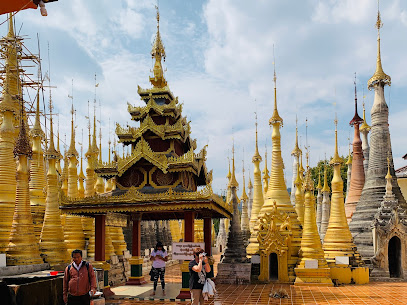
Shwe Oo Min Monastery
Discover tranquility at Shwe Oo Min Monastery in Kalaw, adorned with thousands of Buddha statues amidst stunning natural beauty.

Sanctum Inle Resort
Experience tranquil luxury at Sanctum Inle Resort, a serene haven on the shores of Inle Lake, blending modern comforts with rich cultural heritage.

Nyaung Shwe Night Market
Discover the vibrant Nyaung Shwe Night Market, a cultural melting pot of food, crafts, and local life in Myanmar's picturesque town.
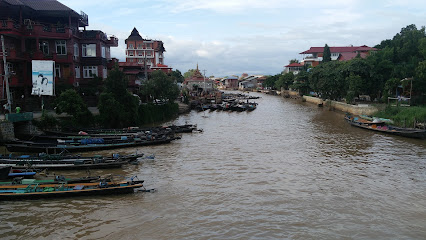
Aureum Palace Hotel & Resort Inle
Experience unparalleled luxury and natural beauty at Aureum Palace Hotel & Resort, a serene haven by Inle Lake in Myanmar.
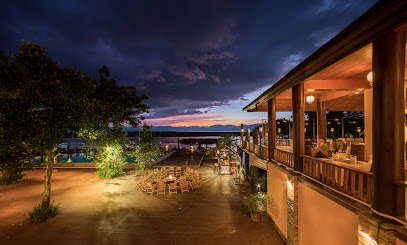
Paramount Inle Resort
Discover the beauty and culture of Inle Lake at Paramount Inle Resort, where luxury meets nature in a serene setting.

Hupin Khaung Daing Resort Inle Lake
Discover the serene beauty and rich culture of Inle Lake while enjoying luxurious comfort at Hupin Khaung Daing Resort.

Paw Paw Café & Restaurant
Discover the delightful flavors of Myanmar at Paw Paw Café & Restaurant, a must-visit culinary destination in Nyaungshwe.
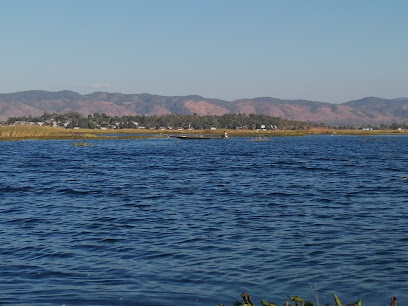
ViewPoint Lodge & Fine Cuisines
Experience luxury and local flavors at ViewPoint Lodge & Fine Cuisines, your perfect retreat in Nyaungshwe, Myanmar, near the stunning Inle Lake.

Myanmar Treasure Hotel & Resort Inle
Discover the serene beauty and rich culture of Inle Lake at Myanmar Treasure Hotel & Resort—your perfect retreat for relaxation and adventure.

Unmissable attractions to see
Nga Phe Chaung Monastery
Explore the serene Nga Phe Chaung Monastery on Inle Lake, a tranquil Buddhist sanctuary rich in history and culture with breathtaking views.
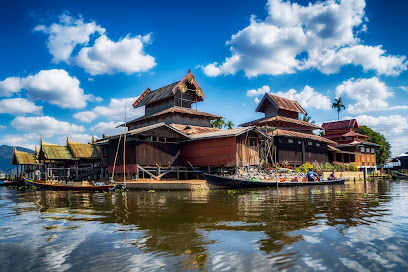
Sri Mingala Taung Taw (Taung Kwe Zedi)
Explore the spiritual haven of Sri Mingala Taung Taw, a stunning pagoda in Loikaw, Myanmar, offering breathtaking views and rich cultural experiences.
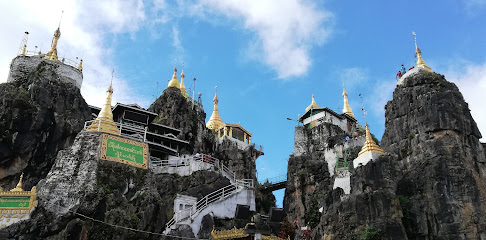
Kakku Pagodas
Discover the breathtaking Kakku Pagodas, a stunning collection of over 2,500 ancient stupas set in the serene hills of Shan State, Myanmar.
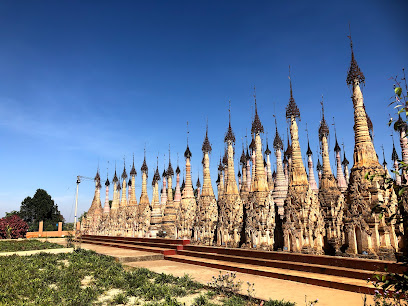
Red Mountain Estate Vineyards & Winery
Discover the beauty of Red Mountain Estate Vineyards & Winery, a scenic winery in Myanmar offering exquisite wines and breathtaking views.

Shwe Inn Dein Pagoda
Discover the enchanting Shwe Inn Dein Pagoda, a sacred haven with over a thousand stunning stupas near Inle Lake, Myanmar.
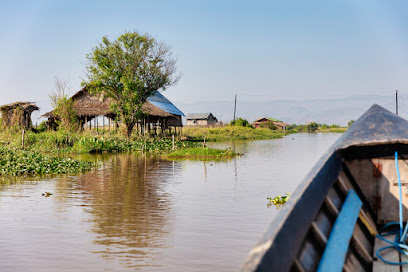
Nyaung Ohak
Explore the ancient stupas of Nyaung Ohak, a serene historical site near Inle Lake that embodies the rich culture and history of Myanmar.
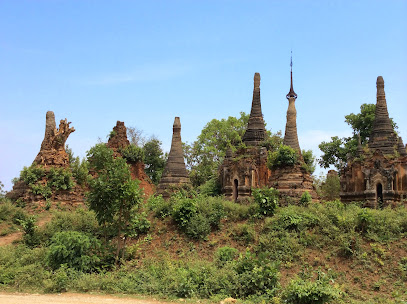
Nyaung Shwe Night Market
Discover the vibrant Nyaung Shwe Night Market, where delicious street food meets local craftsmanship in a lively cultural experience.
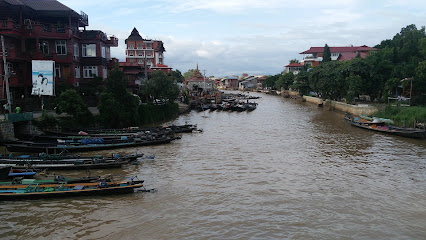
Pindaya Caves
Explore the enchanting Pindaya Caves in Myanmar, where thousands of Buddha statues await within stunning limestone formations amidst beautiful landscapes.
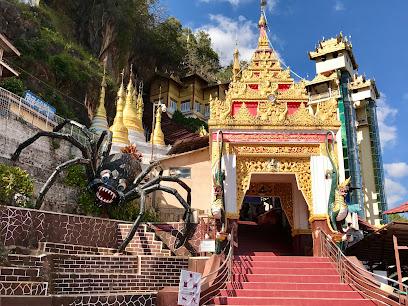
ဗျိုက်တောင်
Discover the captivating charm of Aungpan, a hidden gem in Myanmar, where rich culture meets breathtaking landscapes for an unforgettable travel experience.
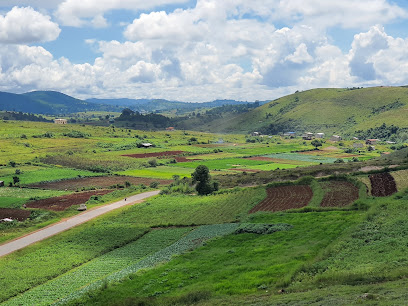
Khaung Daing Natural Hot Spring
Experience ultimate relaxation at Khaung Daing Natural Hot Spring, where natural thermal pools meet stunning landscapes for a rejuvenating getaway.
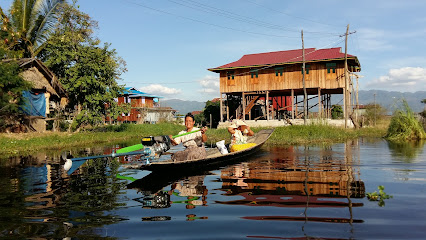
Green Hill Valley Elephant Camp
Discover the wonders of ethical elephant tourism at Green Hill Valley Elephant Camp in Kalaw, Myanmar, where nature and conservation come together.
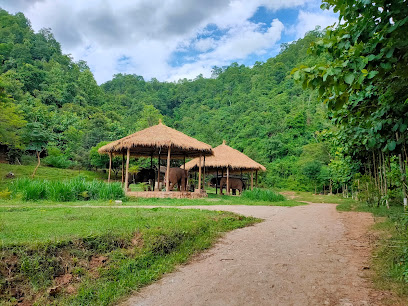
Inle Horse Club
Discover the beauty of Inle Lake on horseback at Inle Horse Club, where adventure meets breathtaking scenery in Myanmar's natural paradise.
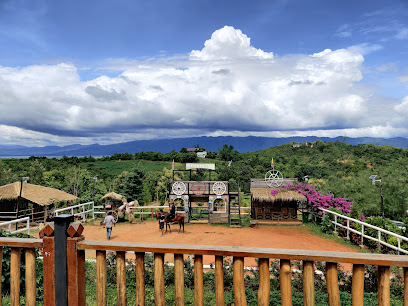
Kalaw City View (ကလောမြို့ရှူခင်း)
Experience stunning panoramic views at Kalaw City View, an enchanting tourist attraction nestled in the lush landscapes of Myanmar's Kalaw region.
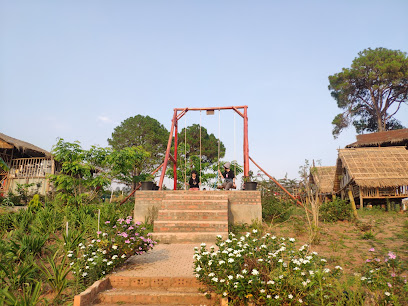
Eastern Amusement Park(Joyful Land)
Experience the thrill of Joyful Land in Taunggyi, Myanmar – a vibrant amusement park full of fun rides, delicious food, and unforgettable memories.
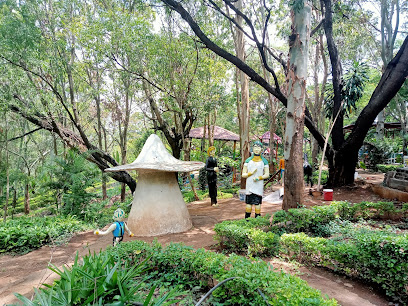
Shwe Oo Min Pagoda
Explore the enchanting Shwe Oo Min Pagoda in Pindaya, a unique site with thousands of Buddha statues nestled in stunning caves amidst lush hills.
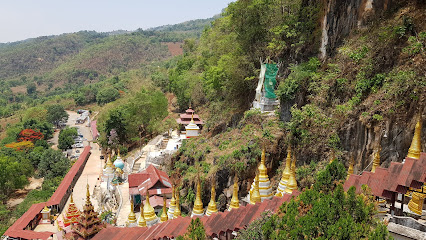
Essential places to dine
Sin Yaw Restaurant
Experience authentic Burmese cuisine in a welcoming atmosphere at Sin Yaw Restaurant in Nyaungshwe.
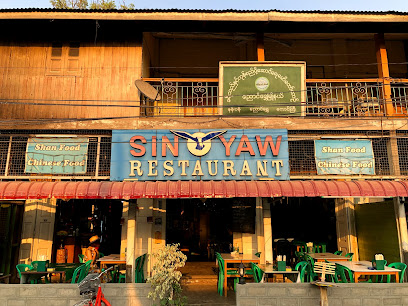
Paw Paw Café & Restaurant
Experience authentic Burmese flavors at Paw Paw Café & Restaurant in Nyaungshwe – where every dish tells a story.
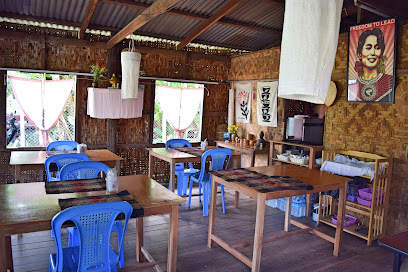
Pwe Taw Win Nature's Restaurant
Discover authentic Shan cuisine at Pwe Taw Win Nature's Restaurant, where every meal is a celebration of local flavors amidst stunning lake views.
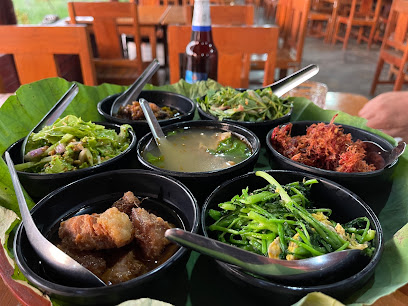
Bamboo Hut Home Cooking
Experience authentic Burmese cuisine at Bamboo Hut Home Cooking in Nyaungshwe - where every dish tells a story.
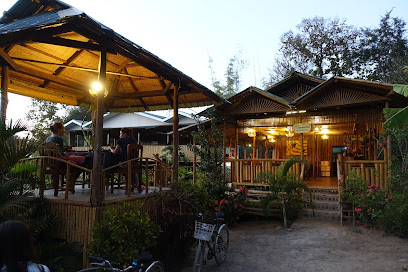
La Riziere Buvette
Discover authentic Myanmar flavors at La Riziere Buvette, a cozy restaurant near Inle Lake offering delicious local dishes in a serene setting.
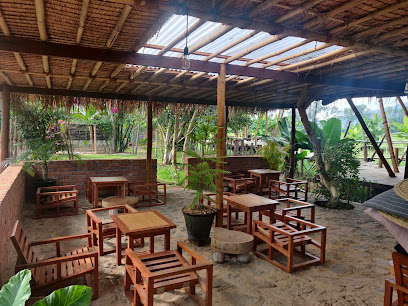
The Ancestor Restaurant
Experience authentic Burmese flavors at The Ancestor Restaurant in Nyaungshwe – a must-visit culinary destination for travelers.
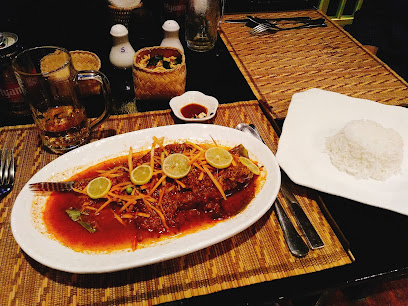
Linn Htet Myanmar Traditional Food / Myo Myo Cooking Class
Discover the rich flavors of Myanmar at Linn Htet Traditional Food - an authentic culinary experience awaits you!
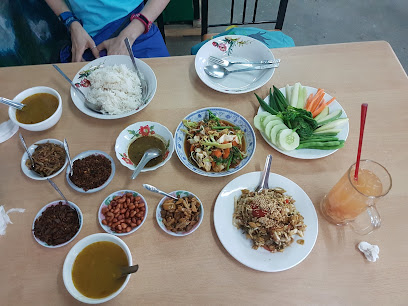
The Shan Noodle & Food House
Discover the heart of Myanmar’s cuisine at The Shan Noodle & Food House in Nyaungshwe - where tradition meets flavor!
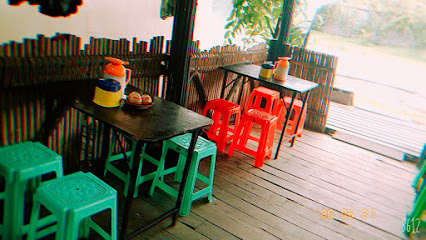
Tofu House Inle Lake
Experience authentic Burmese flavors at Tofu House by Inle Lake – where culinary tradition meets stunning lakeside views.
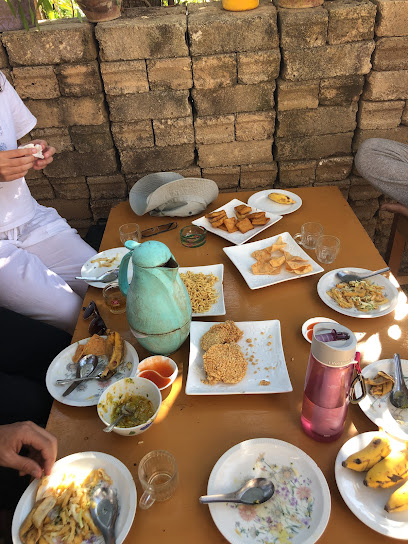
Inle Palace
Experience authentic Myanmar cuisine at Inle Palace while soaking in stunning views of Nyaungshwe's natural beauty.
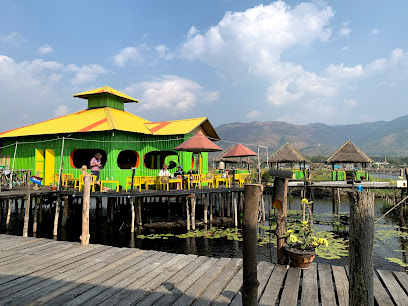
Eyeful Lake Restaurant
Experience delightful Burmese cuisine with stunning views at Eyeful Lake Restaurant in Nampan.
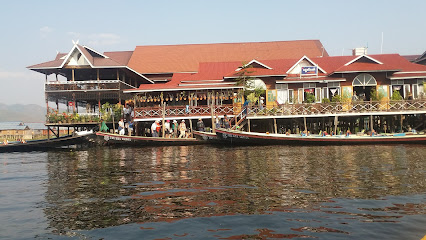
Inle Palace Restaurant Cocktail Bar & Cafe
Discover authentic Burmese cuisine blended with international flavors at Inle Palace Restaurant Cocktail Bar & Cafe near beautiful Inle Lake.
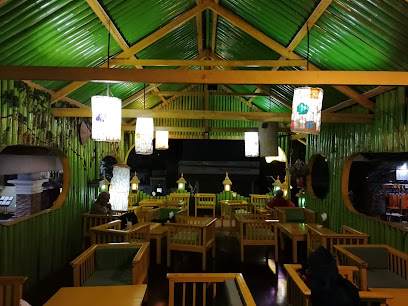
Shwe Yee Win Floating Restaurant
Discover Shwe Yee Win Floating Restaurant - where delightful Burmese cuisine meets breathtaking waterfront views in a unique dining setting.
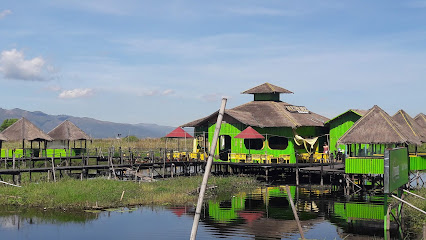
Family Restaurant
Experience authentic flavors at Family Restaurant near Inle Lake - where local cuisine meets warm hospitality.

အမြဲစိမ်း စားသောက်ဆိုင်
Discover authentic Burmese cuisine at အမြဲစိမ်း စားသောက်ဆိုင် in Nyaungshwe – where every dish is crafted with love and tradition.
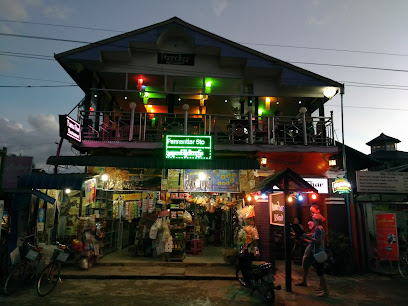
Markets, malls and hidden boutiques
Ei Ei Silver Shop
Explore the exquisite craftsmanship of artisanal silver jewelry at Ei Ei Silver Shop, a gem in the heart of Nyaungshwe's vibrant market.
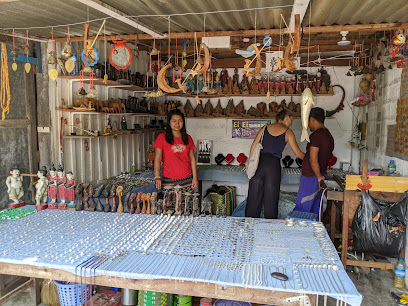
Sofia’s Silver Shoppe
Explore the exquisite craftsmanship at Sofia’s Silver Shoppe in Nyaungshwe, a treasure trove of handcrafted silver jewelry reflecting local artistry.

Pyae Sone Aung Store
Discover local treasures and everyday essentials at Pyae Sone Aung Store in Nyaungshwe, where culture and convenience meet.

Sein Ngwe Shan
Discover the vibrant world of Burmese textiles at Sein Ngwe Shan, a clothing store in Nyaungshwe showcasing traditional craft and culture.
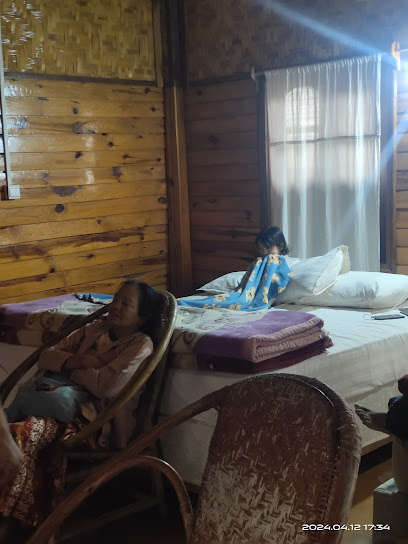
Man Kyaw Fashion
Explore the vibrant fashion scene at Man Kyaw Fashion in Nyaungshwe, where traditional meets modern style in a unique shopping experience.
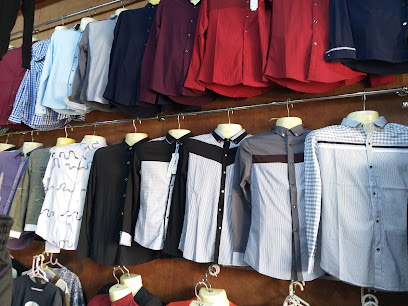
Trinity Family Shop
Explore Trinity Family Shop in Nyaungshwe for unique local handicrafts and authentic souvenirs that embody the spirit of Myanmar.
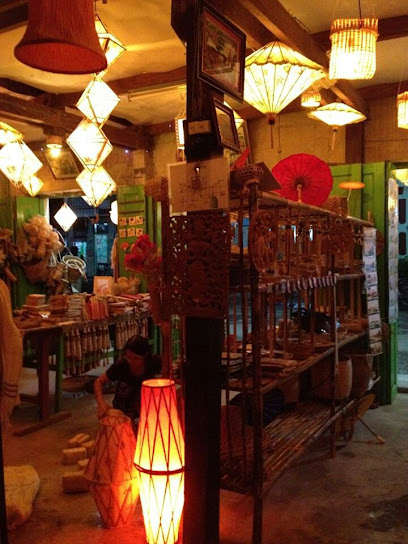
TIP TOP STORE
Explore Tip Top Store in Nyaungshwe for unique home goods and local crafts that showcase Myanmar's rich culture and artistry.
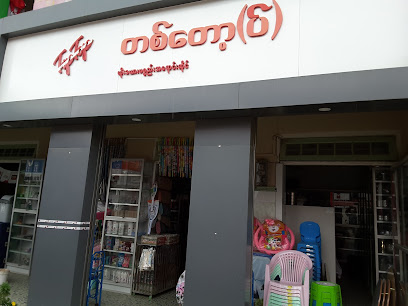
Ma Kyi Kyi Win Traditional Clothing Shop
Explore the essence of Burmese culture at Ma Kyi Kyi Win, a traditional clothing shop in Nyaungshwe featuring exquisite handmade garments.
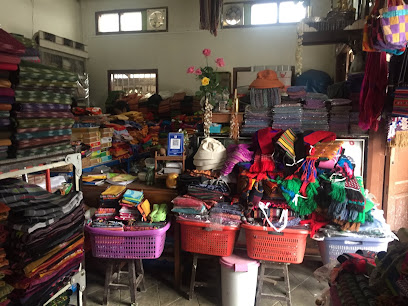
လမင်း
Discover the essence of Nyaungshwe at လမင်း Grocery Store, where local flavors and fresh ingredients await your culinary adventure.
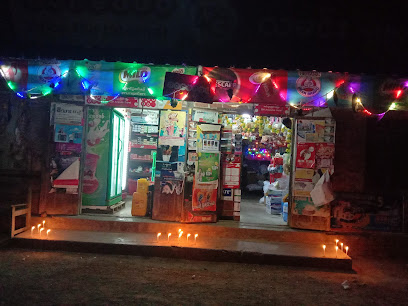
Convenience store
Discover local flavors and essentials at the heart of Intha's convenient store, your go-to stop for all travel needs.
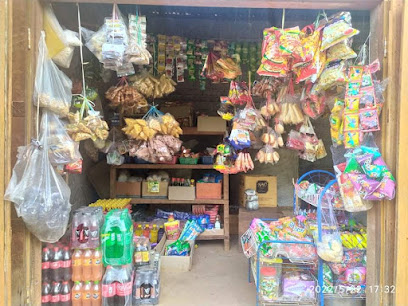
InnLaysaithiha
Explore InnLaysaithiha, where the essence of Myanmar's artistry meets home goods shopping in a charming village setting.

အိမ်ဖြူတော်စတိုး
Explore authentic Myanmar treasures at အိမ်ဖြူတော်စတိုး in Nyaungshwe, a charming store offering unique local products and souvenirs.

Super
Explore vibrant fashion and authentic local craftsmanship at Super Clothing Store in Nyaungshwe, a must-visit for every tourist.

ချစ်လေး ကွမ်းယာဆိုင် betel shop
Discover the authentic taste of Myanmar at Chit Lay Kwan Ya Shop, where betel culture comes alive amidst a welcoming local atmosphere.

San Thit Store
Explore the best in electronics at San Thit Store, where modern technology meets the charm of Nampan, Myanmar.

Essential bars & hidden hideouts
La Riziere Buvette
Savor the tastes of Myanmar at La Riziere Buvette, a cozy haven in Kanu Village offering authentic Burmese cuisine amidst stunning views.
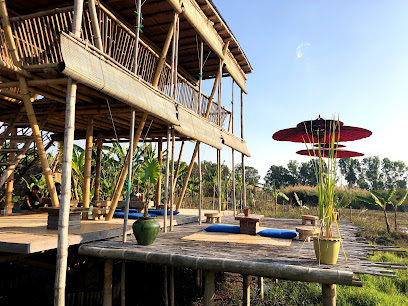
Tofu House Inle Lake
Experience the best of Burmese cuisine with fresh ingredients and stunning views at Tofu House on Inle Lake.
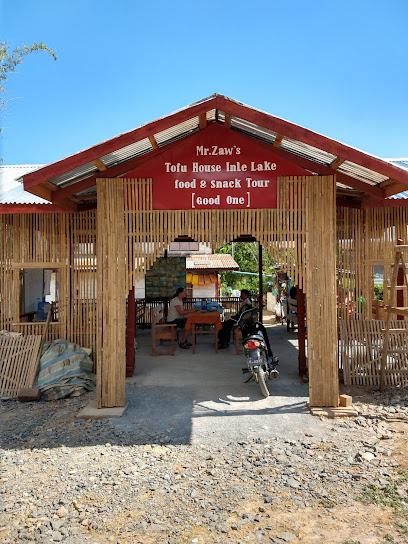
Inle Palace
Experience the authentic taste of Myanmar at Inle Palace in Nyaungshwe, where traditional flavors meet breathtaking views.
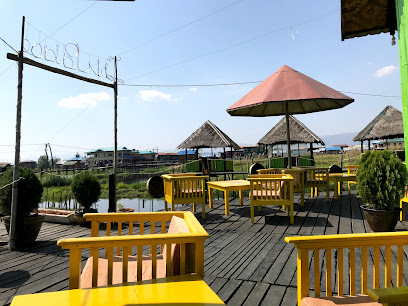
Eyeful Lake Restaurant
Experience exquisite Burmese cuisine with stunning views at Eyeful Lake Restaurant, the perfect dining escape in Inle Lake.
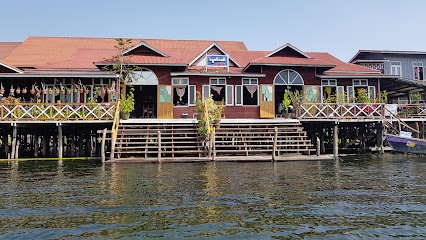
Family Restaurant
Explore the flavors of Myanmar at Family Restaurant, a beloved dining spot near Inle Lake that promises a warm atmosphere and delicious traditional dishes.
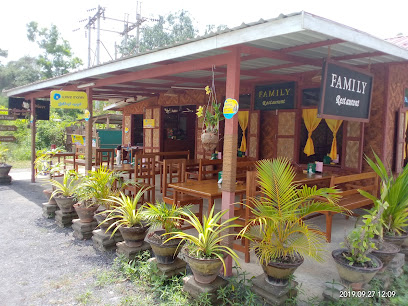
Exit 32 Restaurant & Organic Spa /Taxi & Boat Service
Discover delicious organic cuisine and rejuvenating spa treatments at Exit 32 Restaurant & Organic Spa in Inle, Myanmar.
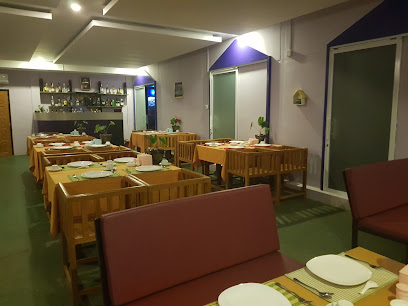
Minthamee Bar & Bistro
Discover the culinary delights of Minthamee Bar & Bistro in Nyaungshwe, where local flavors meet international cuisine in a cozy atmosphere.

Wave Family KTV
Experience the joy of karaoke at Wave Family KTV in Nyaungshwe, where fun meets affordable entertainment for music lovers.
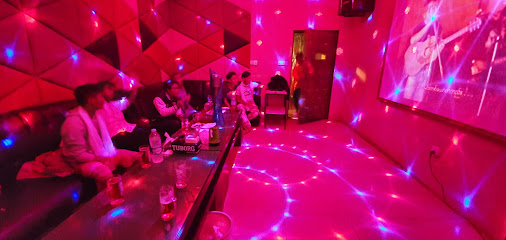
Pann Gabar Restaurant(ဂျင်းဆိုင် ဈေးမတန်)
Discover Pann Gabar Restaurant: A Culinary Delight on Inle Lake West Corridor with Authentic Burmese Cuisine.
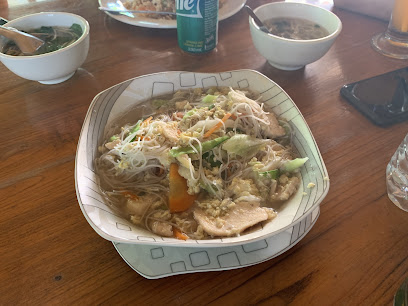
Eden Bar & Snacks
Discover the flavorful world of Eden Bar & Snacks in Nyaungshwe, where delicious meals and refreshing drinks await every traveler.
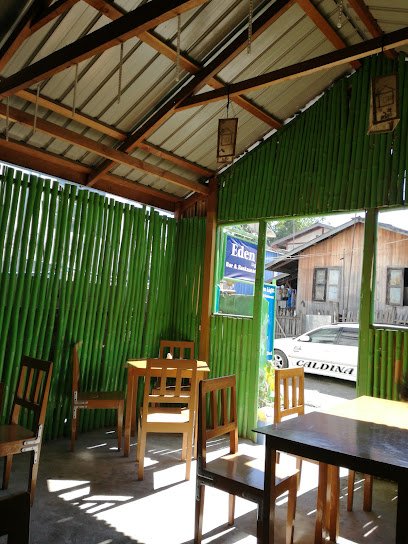
Exotic Lunch on Boat by INLE Kitchen
Indulge in a unique boat dining experience at Inle Lake, savoring local flavors while surrounded by breathtaking landscapes.

Crazy Night Music Bar and Restaurant
Discover the lively spirit of Taunggyi at Crazy Night Music Bar and Restaurant, where great food meets vibrant live music for an unforgettable night out.

Diamond Light Beam Bar and Restaurant
Discover the vibrant atmosphere and diverse menu at Diamond Light Beam Bar and Restaurant in Shwenyaung, a must-visit for culinary enthusiasts.
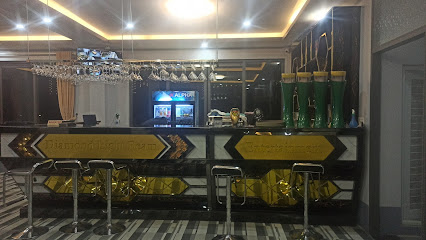
Aye Chan Yake Food & Drink
Experience the authentic flavors of Myanmar at Aye Chan Yake Food & Drink, a cozy bar in Inle Lake offering traditional dishes and refreshing drinks.
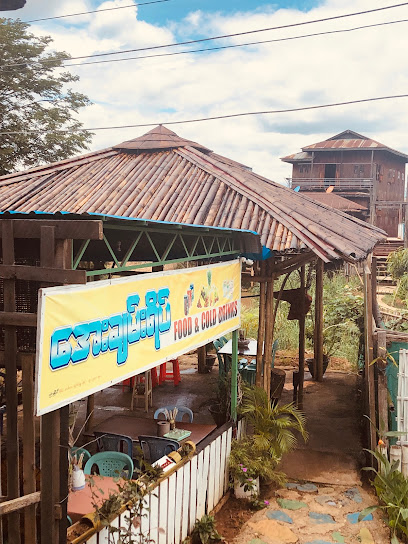
BELU BAR
Experience the charming ambiance of Belu Bar in Nyaungshwe, where local flavors meet an inviting atmosphere for relaxation.

Local Phrases
-
- Helloမင်္ဂလာပါ
[mingalabar] - Goodbyeသွားသွား
[swar swar] - Yesဟုတ်ကဲ့
[huu ke] - Noမဟုတ်ဘူး
[ma huu bu] - Please/You're welcomeကျေးဇူးပါတယ်
[chay zu ba de] - Thank youကျေးဇူးပါတယ်
[chay zu ba de] - Excuse me/Sorryအမှားခဲ့ပါသလား
[amhar kyay ba tha la] - How are you?ဘယ်ဘက်လဲ
[be ba lae] - Fine. And you?ဟုတ်ကဲ့။ဘယ်ဘက်လဲ
[huu ke, be ba lae] - Do you speak English?အင်္ဂလိပ်မိတ်မယ်လို
[ingaleip mit ma lae] - I don't understandသိရှင်မတင်ပါ
[se shin ma taung ba]
- Helloမင်္ဂလာပါ
-
- I'd like to see the menu, pleaseမီနူးကြည့်နိုင်ပါတယ်
[menu gyi nu nein ba de] - I don't eat meatအချိန်မဆိုးရမယ်
[akin ma hso ma ya] - Cheers!ကြည့်နိုင်ဓာတ်ပါ
[nein nein dar ba] - I would like to pay, pleaseငွေကုန်ခဲ့သလား
[ngwe koun kyay tha la]
- I'd like to see the menu, pleaseမီနူးကြည့်နိုင်ပါတယ်
-
- Help!သူငါး
[su nga] - Go away!ထင်ကျပ်
[htang ka pya] - Call the Police!ရုံးချည်မှာပါ
[yone chin ma ba] - Call a doctor!အဆင့်ချည်မှာပါ
[a hsin chin ma ba] - I'm lostခြောက်ထဲမှာလို့
[kawtai ma lae] - I'm illကျေးဇူးပါတယ်
[chay zu ba de]
- Help!သူငါး
-
- I'd like to buy...ဝယ်ပါတယ်
[wai ba de] - I'm just lookingကြည့်ရှင်မယ်
[ne shin ma ya] - How much is it?ဘယ်ဘက်ကျပ်မှာလဲ
[be ba ka ma lae] - That's too expensiveဒါရှင်ကျပ်ရမယ်
[da shin ka pya ma ya] - Can you lower the price?ကျပ်ခြင်းလား
[ka pya khan la]
- I'd like to buy...ဝယ်ပါတယ်
-
- What time is it?ဘယ်အချိန်လဲ
[be a hcin lae] - It's one o'clockတစ်နာရီပါ
[tacha nari ba] - Half past (10)ဆယ်နာရီ
[sa nari] - Morningနန်
[nan] - Afternoonနေ့
[nea] - Eveningည
[nye] - Yesterdayမနေ
[mnea] - Todayယနေ
[ya mnea] - Tomorrowမနက်
[mna kaw] - 1၁
[hti] - 2၂
[ni] - 3၃
[sa] - 4၄
[la] - 5၅
[nga] - 6၆
[cha] - 7၇
[kha] - 8၈
[hta] - 9၉
[ko] - 10၁၀
[ta]
- What time is it?ဘယ်အချိန်လဲ
-
- Where's a/the...?…ဆိုင်ရဲ့မော်လသားဘူး
[…sone yai maulethar bu] - What's the address?လိပ်စာဘွဲလဲ
[leiksa bwe lae] - Can you show me (on the map)?မော်လသားနောက်တစ်ယောက်ကို
[mau lethar neouti oki] - When's the next (bus)?နောက်သလိုမော်လျင်လဲ
[neouti maulein lae] - A ticket (to ....)လက်မှတ်ရမှာလား
[lakhmat ma ba]
- Where's a/the...?…ဆိုင်ရဲ့မော်လသားဘူး
History of Inle Lake
-
Inle Lake, located in the Shan State of Myanmar, is believed to have been settled as early as the 14th century by the Intha people. The Intha, who are thought to have migrated from the southern regions of Myanmar, adapted to the unique aquatic environment of the lake, developing distinctive stilt house architecture and floating gardens.
-
During the British colonial period in Burma, which began in the late 19th century, Inle Lake and its surrounding regions saw increased interaction with the outside world. The British established administrative centers in nearby towns and introduced modern infrastructure, including roads and railways, facilitating trade and cultural exchange. Despite this, the Intha people maintained much of their traditional way of life.
-
Buddhism plays a central role in the culture and daily life of the Intha people. Numerous pagodas and monasteries dot the shores of Inle Lake, including the famous Phaung Daw Oo Pagoda, which houses five revered Buddha images. The annual Phaung Daw Oo Pagoda Festival, featuring boat races and elaborate ceremonies, is a significant cultural event that draws visitors from across Myanmar.
-
Inle Lake is renowned for its unique floating gardens, where locals cultivate crops such as tomatoes, cucumbers, and flowers on woven mats of water hyacinth and silt. Additionally, traditional crafts like silk weaving, silverwork, and cheroot making are integral to the local economy. Villages like Inpawkhon are famous for their intricate lotus silk weaving, a practice passed down through generations.
-
Following Myanmar's independence from British rule in 1948, Inle Lake continued to be a vital cultural and economic region within the country. The area has seen gradual development, including improvements in infrastructure and increased tourism. However, these changes have also brought challenges, such as environmental degradation and the need to balance modernity with preservation of traditional practices.
-
In recent decades, Inle Lake has become a popular destination for both domestic and international tourists, known for its scenic beauty and cultural richness. Conservation efforts have been initiated to protect the lake's fragile ecosystem and promote sustainable tourism. Organizations and local communities are working together to address issues like water pollution and habitat loss, ensuring that Inle Lake remains a vibrant and thriving region for future generations.
Inle Lake Essentials
-
Inle Lake is located in the Shan State of Myanmar. The nearest airport is Heho Airport, approximately 35 kilometers away. From the airport, you can take a taxi or a shared minibus to Nyaung Shwe, the main gateway to Inle Lake. The journey typically takes around 1 hour. Alternatively, you can travel by bus from major cities like Yangon, Mandalay, or Bagan to Nyaung Shwe. The bus journey can range from 8 to 12 hours depending on the starting location.
-
Within Inle Lake, the primary mode of transportation is by boat. Longtail boats are available for hire and are the best way to explore the lake and its floating villages. For getting around Nyaung Shwe and nearby areas, bicycles and motorbikes are popular options and can be rented easily. Tuk-tuks and horse carts are also available for short trips within the town. Public buses and shared taxis connect Nyaung Shwe to other towns in the region.
-
The official currency in Myanmar is the Myanmar Kyat (MMK). Credit cards are accepted in some hotels, restaurants, and shops in Nyaung Shwe, but it is advisable to carry cash, especially when visiting the floating villages and rural areas around the lake. ATMs are available in Nyaung Shwe, but they may not always be reliable, so withdrawing sufficient cash in larger cities before arriving is recommended.
-
Inle Lake is generally a safe destination for tourists. However, like any travel destination, it is advisable to take standard precautions. Avoid walking alone at night in unfamiliar areas and keep an eye on your belongings in crowded places such as markets. There are no specific high-crime areas targeting tourists, but it is always best to stay vigilant and aware of your surroundings.
-
In case of emergency, dial 199 for police assistance, 192 for medical emergencies, and 191 for fire emergencies. The local police station and medical facilities are available in Nyaung Shwe. It is recommended to have travel insurance that covers medical emergencies. For minor health issues, there are pharmacies in the town where you can purchase over-the-counter medications.
-
Fashion: Do dress modestly, especially when visiting religious sites. Avoid wearing revealing clothing. Religion: Do respect local customs and traditions. Always remove your shoes and socks before entering pagodas and monasteries. Public Transport: Do be respectful and give up your seat to elderly passengers. Don't eat or drink on public transport. Greetings: Do greet people with a slight bow and say 'Mingalaba' (hello). A smile goes a long way. Eating & Drinking: Do try local delicacies and accept food offerings graciously. Don't refuse hospitality, as it is considered impolite.
-
To experience Inle Lake like a local, visit the morning markets that rotate among different villages around the lake. Engage with locals, as they are often friendly and willing to share stories about their way of life. Don't miss visiting the floating gardens and stilt houses. For a unique experience, attend a traditional Intha boat race or watch the famous leg-rowing fishermen in action. Additionally, exploring the lesser-known villages by bicycle can provide a more intimate look at the local culture.
Trending Landmark in Inle Lake
-
Nga Phe Chaung Monastery
-
Novotel Inle Lake
-
Kakku Pagodas
-
Red Mountain Estate Vineyards & Winery
-
Shwe Inn Dein Pagoda
-
Nyaung Ohak
-
Shwe Oo Min Monastery
-
Sanctum Inle Resort
-
Nyaung Shwe Night Market
-
Aureum Palace Hotel & Resort Inle
-
Paramount Inle Resort
-
Hupin Khaung Daing Resort Inle Lake
-
Paw Paw Café & Restaurant
-
ViewPoint Lodge & Fine Cuisines
-
Myanmar Treasure Hotel & Resort Inle
Nearby Cities to Inle Lake
-
Things To Do in Kalaw
-
Things To Do in Naypyidaw
-
Things To Do in Pyin Oo Lwin
-
Things To Do in Mandalay
-
Things To Do in Pai
-
Things To Do in Bagan
-
Things To Do in Mae Hong Son
-
Things To Do in Pyay
-
Things To Do in Chiang Mai
-
Things To Do in Chiang Rai
-
Things To Do in Kyaiktiyo
-
Things To Do in Ngapali
-
Things To Do in Mrauk U
-
Things To Do in Hpa-An
-
Things To Do in Yangon




